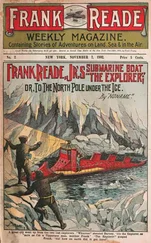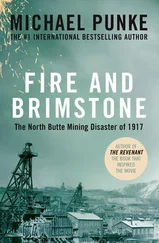George Bryce - The Siege and Conquest of the North Pole
Здесь есть возможность читать онлайн «George Bryce - The Siege and Conquest of the North Pole» — ознакомительный отрывок электронной книги совершенно бесплатно, а после прочтения отрывка купить полную версию. В некоторых случаях можно слушать аудио, скачать через торрент в формате fb2 и присутствует краткое содержание. Жанр: foreign_antique, foreign_prose, на английском языке. Описание произведения, (предисловие) а так же отзывы посетителей доступны на портале библиотеки ЛибКат.
- Название:The Siege and Conquest of the North Pole
- Автор:
- Жанр:
- Год:неизвестен
- ISBN:нет данных
- Рейтинг книги:5 / 5. Голосов: 1
-
Избранное:Добавить в избранное
- Отзывы:
-
Ваша оценка:
- 100
- 1
- 2
- 3
- 4
- 5
The Siege and Conquest of the North Pole: краткое содержание, описание и аннотация
Предлагаем к чтению аннотацию, описание, краткое содержание или предисловие (зависит от того, что написал сам автор книги «The Siege and Conquest of the North Pole»). Если вы не нашли необходимую информацию о книге — напишите в комментариях, мы постараемся отыскать её.
The Siege and Conquest of the North Pole — читать онлайн ознакомительный отрывок
Ниже представлен текст книги, разбитый по страницам. Система сохранения места последней прочитанной страницы, позволяет с удобством читать онлайн бесплатно книгу «The Siege and Conquest of the North Pole», без необходимости каждый раз заново искать на чём Вы остановились. Поставьте закладку, и сможете в любой момент перейти на страницу, на которой закончили чтение.
Интервал:
Закладка:
George Bryce
The Siege and Conquest of the North Pole
PREFACE
My chief object in compiling this work has been to supply a brief account of the main efforts which have been made to reach the North Pole. The subject is now so extensive that few have the opportunity of covering the whole ground. While the exciting and specially interesting incidents have not been omitted, the book aims at giving the reader an intelligent idea of the equipment and other means by which the work of exploration has been carried on.
The many expeditions which have set out to find a north-west or a north-east passage do not come within the scope of the book, except when they have had some special bearing on the struggle for the Pole.
Those who may wish to pursue the subject further by consulting the original authors can be assured that no works of fiction relate greater deeds of heroism than are found in the records of Arctic exploration; and that while they may satisfy their love for the adventurous they will add something to their geographical knowledge.
It is hoped that the maps may be of considerable assistance in enabling the reader to follow the narrative. The spelling of geographical and other names is generally that adopted by the authors of the original works.
GEORGE BRYCE. Birmingham, December 1909 .GLOSSARY OF ARCTIC TERMS
Beset , so enclosed by floating ice as to be unable to navigate.
Bore , to force through loose or recent ice.
Calf , detached mass from berg or glacier, rising suddenly to the surface.
Crow’s nest , a look-out place attached to the topgallant-masthead.
Dock , an opening in the ice, artificial or natural, offering protection.
Drift ice , detached ice in motion.
Field ice , an extensive surface of floating ice.
Floe , a detached portion of a field.
Hummocks , ridges of broken ice formed by collision of fields.
Ice-blink , a peculiar appearance of the atmosphere over distant ice.
Ice-foot , the ice which adheres to the coast above the ordinary level of the sea.
Lane or lead , a more or less navigable opening in the ice.
Nip , the condition of a vessel pressed upon by ice on both sides.
Pack , a large area of floating masses of ice driven together more or less closely.
Palæocrystic ice , the name given by Nares to the old ice of the Polar Sea.
Polynia , a Russian term for an open-water space.
Rue-raddy , a shoulder-belt to drag by.
INTRODUCTION
“There’s a flag on the mast, and it points to the north,
And the north holds the land that I love;
I will steer back to northward, the heavenly course
Of the winds guiding sure from above.”
The North Pole is the centre of the Northern Hemisphere. This hemisphere contains Europe, Asia, North America, and a large part of Africa, yet no human being reached its centre before the eighth year of the twentieth century A.D.
The North Pole is the point where the axis of the earth cuts its surface. It is the point where, as Captain Hall expressed it, there is no north, no east, no west. It is the place where every wind that blows is a south wind. It is a point where all the meridians meet, and there is therefore no longitude. It is one of the two places on the surface of the earth where there is but one night and one day in every year. It is a point from which all the heavenly bodies appear to move in horizontal courses, and the stars never set. It is not to be confused with the magnetic pole, which is situated about 1600 miles south of it, near the mainland of North America. At the North Pole the magnetic needle points due south.
The North Pole is therefore a place of absorbing interest, and until it was reached man never rested satisfied. Ever since Robert Thorne, in the reign of Henry VIII., offered “very weighty and substantial reasons to set forth a discoverie even to the North Pole,” the struggle has been going on.
In no other records of adventure do we find greater deeds of daring than in those of Arctic travel. The dauntless courage in the face of extreme danger, the perseverance when hope was forlorn, the self-sacrifices made to render assistance to comrades, all stamp these pioneers of science and commerce as heroes in the highest sense of the word. Some of their daring exploits, their successes and disasters, are here recorded, but the author hopes that this book will only serve as an introduction to the original ones. After reading the thrilling narratives of Arctic exploration, one is ready to admit that “truth is stranger than fiction.”
The Polar regions can be reached by only three navigable routes. Either by the wide passage between Greenland and Norway, a smaller passage between Greenland and America, or by the narrow Bering Strait between America and Russia.
Up till the beginning of the nineteenth century nearly all the Arctic voyages had as the chief object the discovery either of a north-west or a north-east passage to the Pacific Ocean.
On the 7th June 1585 two tiny craft sailed from Dartmouth in quest of the North-West Passage. They were commanded by John Davis, a daring explorer.
Davis sighted Greenland on 20th July, and on the 29th he was off where now stands the Danish settlement of Godthaab. He crossed the strait which now bears his name, and traced part of the western coast.
Davis made a second voyage in 1586, and a third in 1587. In the latter year he reached and named Sanderson’s Hope, in 72° 41′.
Between 1594 and 1596 three expeditions were dispatched by the Dutch towards Spitzbergen. That of 1596 is of special interest. William Barents, the discoverer of Spitzbergen, was the chief pilot. The ship reached Ice Haven, Novaya Zemlya, on 26th August, and here the party were forced to winter. A house was built with wood, but the winter was passed miserably, scurvy ultimately making its appearance among the crew. The ship being hopelessly beset by the ice, it was decided during the following summer to abandon it.
In two boats, the party of fifteen men started on a journey of 1524 miles. Barents himself and one of the crew were ill, and had to be dragged on a sledge from the house to the boats. Both died on the boat-journey. The remainder ultimately reached Russian Lapland, where their troubles ceased.
About 274 years afterwards, the house built by Barents was discovered by Captain Carlsen. Over the fireplace still stood the cooking-pans, an old clock was against the wall, and arms, tools, drinking-vessels, and books were found as they had been left nearly three centuries before.
In 1607, Henry Hudson endeavoured to reach the Pole along the east coast of Greenland. He attained 73° at a point which he named “Hold with Hope.”
He then examined the edge of the ice between Greenland and Spitzbergen, and reached the latitude of 80° 23′. He named the north-west point of Spitzbergen “Hakluyt Headland,” and on his way home he discovered the island now known as “Jan Mayen.”
In 1610 he discovered Hudson’s Strait, and the great bay which bears his name.
On 26th March 1616, Robert Bylot as master, with William Baffin as pilot and navigator, set out from Gravesend in the Discovery , a craft of only 55 tons. Greenland was sighted on 14th May, and on the 30th May, Sanderson’s Hope, the farthest point of Davis, was reached. On the 9th June he discovered Baffin Islands, in 73° 54′. He then took what is known as the “Middle Passage” across Melville Bay, and reached the “North Water” of the whalers of to-day.
Читать дальшеИнтервал:
Закладка:
Похожие книги на «The Siege and Conquest of the North Pole»
Представляем Вашему вниманию похожие книги на «The Siege and Conquest of the North Pole» списком для выбора. Мы отобрали схожую по названию и смыслу литературу в надежде предоставить читателям больше вариантов отыскать новые, интересные, ещё непрочитанные произведения.
Обсуждение, отзывы о книге «The Siege and Conquest of the North Pole» и просто собственные мнения читателей. Оставьте ваши комментарии, напишите, что Вы думаете о произведении, его смысле или главных героях. Укажите что конкретно понравилось, а что нет, и почему Вы так считаете.












